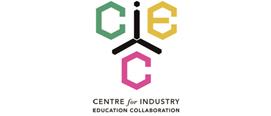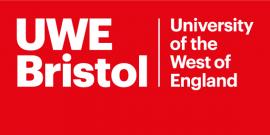Year 5: Properties of materials
Properties and Changes of Materials has been split into two lists , which look at properties and changes of materials and changes of state.This list consists of lesson plans and activities to support the teaching of properties and changes of materials in Year Five. It contains tips on using the resources, suggestions for further use and background subject knowledge. Possible misconceptions are highlighted so that teachers may plan lessons to facilitate correct conceptual understanding. Designed to support the new curriculum programme of study it aims to cover many of the requirements for knowledge and understanding and working scientifically. The statutory requirements are that children are taught to:
· compare and group together everyday materials based on evidence from comparative and fair tests, including their hardness, solubility, transparency, conductivity (electrical and thermal), and response to magnets
· understand that some materials will dissolve in liquid to form a solution, and describe how to recover a substance from a solution
· use knowledge of solids, liquids and gases to decide how mixtures might be separated, including through filtering, sieving and evaporating
· give reasons, based on evidence from comparative and fair tests, for the particular uses of everyday materials, including metals, wood and plastic
· demonstrate that dissolving, mixing and changes of state are reversible changes
Visit the primary science webpage to access all lists.
- ALL
- STEM Club
- Teacher guidance
- Video
- Activity sheet
STEM Club
Pulp to paper (in forces and recycling)
Children explore materials through making their own recycled paper.
Teacher guidance
Kitchen Concoctions
Children can explore a range of mixtures, through fun kitchen science practicals and scenarios.
Pinch of Salt
Children can explore solutions, evaporation and filtering through the real world applications of salt.
Plastics Playtime
Children can explore the properties of materials, including thermal insulation, through a range of activities linked to plastics.
Runny Liquids
A range of activities linked to Y5 materials, investigating properties of liquids.
Science of Healthy Skin
Relates to Y5 materials.
Video
How can we clean our dirty water?
This resource provides a set of videos and a practical investigation aimed at supporting experimental science in the classroom and relating it to real world experiences. In the first video Professor Brian Cox joins a teacher to find out how to set up and run an investigation to find out how to turn dirty water into clean water. Provided with a water mixture including stones, sand and salt children are asked to separate it to get pure water using sieves, filters and evaporation. In the next video he then joins the class carrying out their investigation. Further videos show Brian Cox visiting a sewage treatment plant to see how sewage is cleaned by various processes so it can be returned to rivers. He also meets a scientist using chromatography as a separation technique.
Activity sheet
Properties and Changes of Materials *suitable for home teaching*
Activity ideas and worksheets which support the teaching of materials and their properties, good for homework sheets.
The Chemedian: Starting Secondary School
Introduce dissolving with this colourful comic, which children will love. Carrying out an investigation which looks at the effect of temperature on dissolving will highlight the importance of fair testing. Further investigations look at different factors, such as the speed of stirring and the weight of salt added.
Children often confuse dissolving and melting so it is worth discussing the difference and providing examples of each.
Melting requires heat and dissolving requires a solvent to take place. Further information and activity ideas may be found here.
Growing Crystals
Children will often describe a solid as 'disappearing' when it dissolves in a solvent such as water, because this is what they observe. This activity is a great way of showing them that salt is still present in the resulting solution and how to recover. Children could use a microscope to observe and draw the shapes of some of the resulting crystals as the water evaporates from the solution and the salt appears.
Although salt or sugar is generally used for this activity, alum (aluminium potassium sulfate) will grow the best crystals and is available from any chemical supplier.
Polymers: Physical Testing
Activities linked to year 5 materials.
Product Design: Polymers in Sleeping Bags
Activities linked to year 5 materials.
Product Design: Sports Shoes
Activities linked to year 5 materials.
Product Design: Pop Bottles
Activities linked to year 5 materials.
Let Sleeping Bags Lie
Lots of activities to test different properties of materials.
Science Specials Needs Supplement
Lots of real life problems for children to solve involving materials and their properties.






